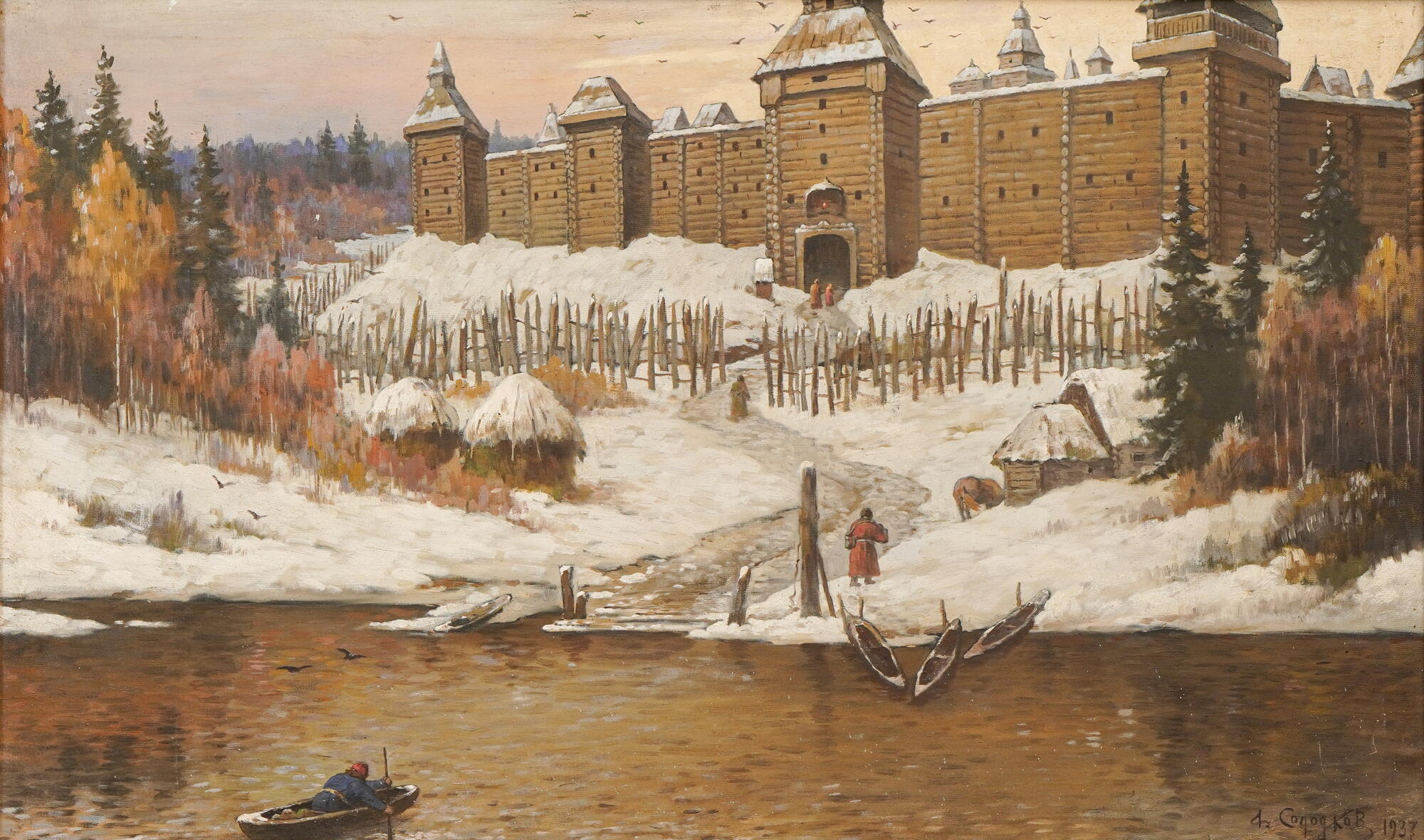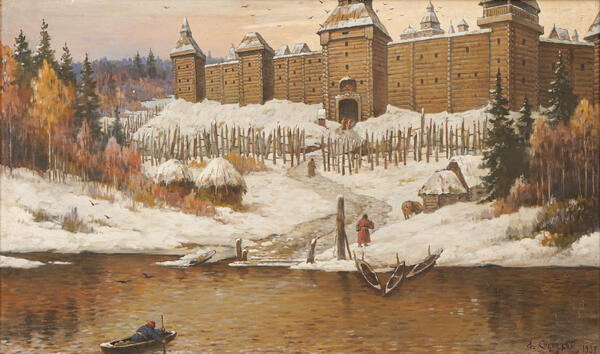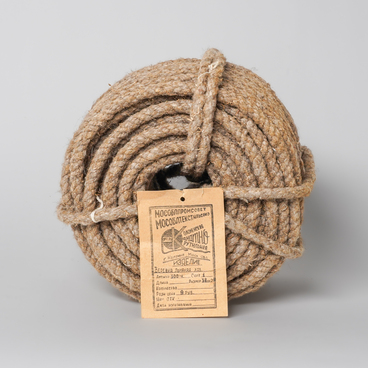The Russian painter Alexey Solodkov (1880-1953) was born near Zvenigorod. He studied at the Stroganov Art School in the 1910s, as well as at the School of Painting, Sculpture and Architecture in Moscow, traveled around the country and painted churches. In the 1920s he became a member of the Association of Artists of Revolutionary Russia, which largely determined the artistic approach he took — socialist realism, revolutionary and historical themes. The artist participated in the First World War. Demobilized in 1918, he arrived in Kolomna in search of work and lived there for the rest of his life. He was one of the first artists in Kolomna to paint historical subjects. In the 1930s, there was a demand for revolutionary themes: the artist painted several such pictures for museums, though his inspiration was not drawn from the revolution of 1917, but that of 1905, and his favorite character was its participant Nikolay Sapozhkov.
Solodkov’s works were often used to illustrate historical books about Kolomna. Unfortunately, not all of the artist’s paintings have survived to this day. Some of the paintings in the museum have been written off for political reasons, while time obliterated others.
The painting “Kolomna in the 12th century” from the collection of the Kolomna Kremlin is a fine work by Alexey Matveyevich Solodkov. It is painted in the historical genre. It depicts Kolomna in late autumn: the river is not yet frozen, but the ground and roofs of buildings are already covered with snow. We see a wooden Kremlin standing on a hill. The wooden Kremlin used to be called “detinets”. Solodkov’s picture shows what the citadel looked like. The Kremlin of the pre-Mongolian period was thought to be insignificantly smaller than the 16th century Kremlin. The picture provides a view across the Moskva River from Bobrenevsky Bridge. The artist depicted the main entrance gate in place of the 16th century Zastenochnaya Tower, to the right of it there is a wooden predecessor of the Sviblovo Tower. The sparse paling in front of the walls represents the wooden post obstacles mentioned in the chronicle. Modern research shows that much on the canvas could be adjusted, but nevertheless the picture is of great value thanks to its creative imagery.
Solodkov’s works were often used to illustrate historical books about Kolomna. Unfortunately, not all of the artist’s paintings have survived to this day. Some of the paintings in the museum have been written off for political reasons, while time obliterated others.
The painting “Kolomna in the 12th century” from the collection of the Kolomna Kremlin is a fine work by Alexey Matveyevich Solodkov. It is painted in the historical genre. It depicts Kolomna in late autumn: the river is not yet frozen, but the ground and roofs of buildings are already covered with snow. We see a wooden Kremlin standing on a hill. The wooden Kremlin used to be called “detinets”. Solodkov’s picture shows what the citadel looked like. The Kremlin of the pre-Mongolian period was thought to be insignificantly smaller than the 16th century Kremlin. The picture provides a view across the Moskva River from Bobrenevsky Bridge. The artist depicted the main entrance gate in place of the 16th century Zastenochnaya Tower, to the right of it there is a wooden predecessor of the Sviblovo Tower. The sparse paling in front of the walls represents the wooden post obstacles mentioned in the chronicle. Modern research shows that much on the canvas could be adjusted, but nevertheless the picture is of great value thanks to its creative imagery.




